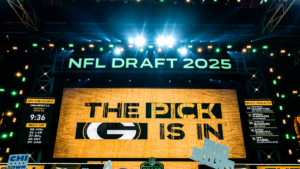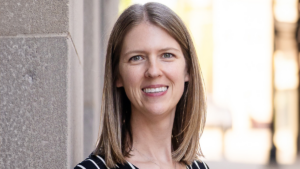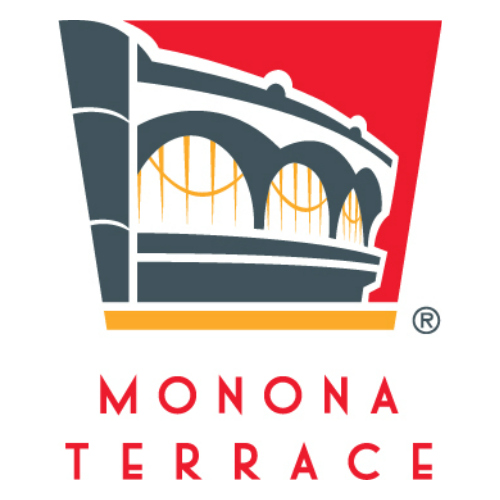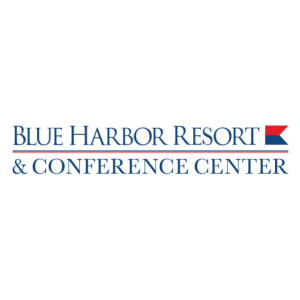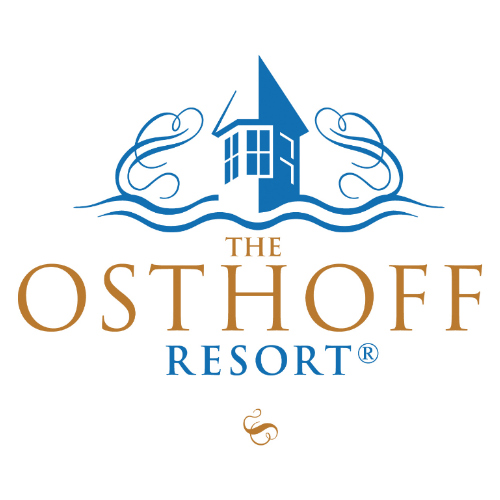Your Destination Concierge
12/17/2024
By Maura Keller
During the lengthy pandemic that upended daily life and events as we know it, the various convention and visitors bureaus (CVBs) dotting our country’s landscape dug deep to keep things running smoothly. Since that time, meetings and events of all sizes are back in full swing, and meeting planners are recognizing that CVBs have truly become partners, helping pave the way to make gatherings even more successful for attendees and planners alike.
Midwest Meetings, our sister publication, connected with several meeting and event planners who have turned to CVBs across the Midwest to gather their insights on how to best leverage CVBs to help coordinate all aspects of an event or meeting, streamlining the planning process and enhancing the overall attendee experience.
Q: What can a CVB offer to you and your event? How did your partner CVB help with your event?
Denise Wallace, executive director of Future Productions: The CVB has an on-the-ground perspective about the community you are considering as an event location. They have insight and connections to venues and businesses. They can not only recommend appropriate vendors, but they can also facilitate introductions.
These vendors are pre-vetted by the CVB and are already qualified as a potentially good lead for your event. Along with the local connections and partnerships, they can recommend destination experiences, event customization, marketing and public relations assistance.
The weekend of our event, the CVB provided event attendees with maps of the area, oftentimes providing a representative on site to answer questions about the community and local hotspots.
Future Productions was even able to work with the local CVB to also apply for a grant to help with the event production’s cost.
Charlie Kludt, president of the South Dakota Firefighters Association: The South Dakota Firefighters Association hosts an annual statewide fire training school and membership meeting over a three-day period. Our event brings in about 500 adults each day.
We used to travel to different locations around the state, but we decided to choose a location for an extended period. After determining where we were going to stay, we immediately made contact with the local CVB group, Visit Watertown in South Dakota.
The CVB presented us with local business choices and contacts that could provide us with the services, products or space that we needed for our event. They provided and prepared registration bags with our event booklets and information, as well as local visitor and business flyers and trinkets. The South Dakota CVB even offered volunteers to assist with registration and other basic needs on site.
Kitty Pursley, director of Little Apple Splash: Visit Manhattan Kansas was absolutely instrumental in the beginning stages of planning Little Apple Splash, the world’s premier canine aquatics competition and a nonprofit for animal rescue set up through the Greater Manhattan Community Foundation.
The CVB’s knowledge of the procedures and venues were very valuable to me in helping make decisions on the event. They also helped identify possible sponsorships and were able to offer a limited financial sponsorship, decreasing each year for three years, so that the event could get a good footing.
In the planning stages, the CVB hosted meetings between the event organizer and city departments that would be a part of the process. They also helped with identifying venues that would be suitable for this event and the community resources that could offer specific organizational skills.
Little Apple Splash was also fortunate to have a dedicated CVB partner that came to the event to make sure that things were going smoothly, and offer to help set up and provide items that the CVB made available for events.
One of the things that made the second event so successful was how attentive the entire Manhattan community was to all the Little Apple participants who came to the area for the first event. Attendees left feeling very appreciated and welcomed by all of Manhattan.
A lot of that came from the support given by the CVB and their staff. Little Apple Splash is now a must-do event and I am hopeful it will continue.
Jenni Wirkus, executive director of the South Dakota Amateur Hockey Association: Visit Watertown in South Dakota helped us with arranging lodging for our hockey tournament, and helped welcome our players and families to Watertown. The CVB worked with local hotels to set up blocks of rooms for our teams so that parents could easily call to make reservations.
When the players and coaches arrived, a goodie bag was given to each of them with information on things to do in the community, places to eat and even some coupons for local establishments.
Anonymous: For a professional conference of scientists from across the state, the CVB offered information on its location and what was available to do there. It even offered to sponsor the event to help with costs.
The CVB also helped with printing name tags and providing goodie bag products for our convention, which was very helpful and allowed us to give better resources to participants.
Bob King, national show coordinator for the National Fishing Lure Collectors Club: Working with a CVB gives me a single point of contact to evaluate the facilities available for my event. Visit Watertown in South Dakota was able to target the places our members might like to visit with online maps, visitor guides and a staffed information table. It also provided welcome and registration material.
Q: When should planners reach out to their partner CVBs when organizing an event?
Wallace: If you are considering bringing an event to a community, you should reach out right away to that local CVB. They can be so instrumental from the start to the finish — from considering the city as an option for an event location all the way through the planning process and actual event date.
Kludt: We introduced ourselves to the CVB at least two years prior to coming to the community. They checked the community calendars and hotels for other possible events going on at the same time. Getting preliminary information out to hotels allowed for us to let our attendees know if there were possible challenges to reserving hotel rooms.
Weddings, conventions or sporting events in the same community can become an issue, but the CVB provided bed and breakfasts and campground locations as alternatives, too, if needed. They even suggested collaborating some of our social events with the local events, boosting both.
Pursley: Planners should reach out to CVBs during the first part of the planning process because of their knowledge of the area, and the key participants and city departments that might be involved. They can serve as a great liaison between the event organizer and community businesses, or city departments and officials.
Wirkus: I think that, as soon as you know the date of your event, you should reach out, so the CVB has it on the calendar. This is beneficial for them to begin helping you right away and also so that, when other groups are planning things in the community, they can see what else is going on when choosing a date for their event.
Anonymous: When planning this conference, I reached out to the CVB before deciding on where to host the event. The responsiveness of the Visit Watertown CVB with information and locations was ultimately what drew me to hosting the event there.
Reaching out at the very beginning of the process is ideal.
King: My experience has been that reaching out to a designated CVB at least two years in advance is good, but three is better.
Q: Is the CVB and meeting planner relationship changing or staying the same?
Wallace: For us, the relationship is the same and just as important as ever. The CVB was and still is a crucial component to successful event planning.
Kludt: Our recent location planning started post-pandemic. The CVB’s knowledge of some lodging locations that were limited occupancy was valuable information.
Pursley: I think everyone (the CVB and event planners) was so anxious to get back to business after the pandemic that everyone was thinking outside the box to make things work and safe for everyone. There is kind of a renewed enthusiasm.
Wirkus: I have worked for many years on many different events with the CVBs and have not noticed any major changes post-pandemic. I have always had a great experience working with them!
Anonymous: I did not plan events pre-pandemic, but had two cities I reached out to post-pandemic. Watertown gave me ideas on meeting locations and businesses to work with, and seriously helped through the whole process. The other CVB, however, gave me a link to their business page, which was difficult to go through.
Keeping up with the customer service aspect and wanting to bring conventions to town is key.
King: In my view, the CVB has become more proactive in their efforts to attract new business.
Q: What other changes in the event and meeting planning and destination management industries are you seeing, if any?
Wallace: I have not seen any changes recently, but continue to see the benefits of working with a CVB in preparation of an event.
Kludt: The willing workforce remains a challenge for all businesses. The CVB we partnered with was great in letting us know if restaurants or businesses had changed hands or were no longer available.
Pursley: Working with Visit Manhattan as a liaison between the community and their resources gave Little Apple Splash credibility since it was a new event being brought to the area and a type of event that had never been hosted in the area.
Things have gotten a bit more technical and the CVB plays a very important role in bringing tourism dollars to a community. Little Apple Splash was a three-day event and brought participants from several states, even from as far away as Florida and Arizona.
Anonymous: It is more personalized from my experience, and maintaining that contact is essential for a great event and experience with the town.
King: I’m seeing the necessity of starting to find a destination earlier. I find that hotels and restaurants are still trying to return to their pre- pandemic levels.
Q: What is the key to having a successful relationship with not only your destination, but also your partner CVB?
Wallace: Keep your CVB representative aware of your needs, checking in throughout the course of planning, and finding ways to promote the community and include them in your event are great ways to support that relationship.
Kludt: CVB personnel can change. Having a good relationship with the office staff is essential so planning continuity can be maintained. We try to check in with each other mid-year and then a few weeks before arrival.
Coming back to the same community year after year makes for easy planning and adjustments to our event. Plus, the CVB and businesses know what we bring to town and what might be a new opportunity.
Pursley: The key to having a successful relationship for the destination and CVB is good, open communication. This is important to understand what can make a successful event and what problems might be encountered.
Being prepared and able to make changes as the event is happening makes all the difference between just having an event and having a great event. The CVB did this for Little Apple Splash from planning for the weather to cleaning up after the event was over.
Wirkus: The key is being organized and reaching out to the CVB as soon as you schedule your event, and keeping open communication with them during the planning process. If you let them know what you are looking for, they will do their best to be able to accommodate you.
Anonymous: Stay in contact and reach out with any questions. I had a great experience as both parties were interested in hosting a good meeting.
I also made sure to invite the CVB to attend so they could see what type of conventions they were bringing to their area.
King: I think communication cannot be overstated. Changes can happen at your destination. No planner wants any surprises at the start of the event.
Q: How can the CVB help market the event before and after?
Wallace: The CVB can be a great help in the marketing of your event. They can list the event on the community calendar, help make connections with local press and more.
Kludt: Visit Watertown worked with local businesses, news and radio to let the community know there were going to be a large number of firefighters in town, just in a non-emergency capacity.
Pursley: Just by being involved with a CVB gives the event credibility, and provides the social media, word-of-mouth marketing and networking that is so necessary in today’s media efforts. In the past, it was radio and news print.
The Visit Manhattan CVB also hosts an after-event wrap-up meeting with all involved to see if there are any items that need to be addressed for the next event. Since Little Apple Splash is an annual event, it is important to identify what went right and what went wrong. Again, the CVB was very important in this process.
Wirkus: The CVB adds your event to their community calendar so everyone knows what’s going on. Local restaurants often have welcome messages on their marquees for the events and I am sure knowing what’s going on in the community significantly helps them, along with hotels and tourist venues, to plan for staffing on busy weekends.
Anonymous: This was a private-invitation event, but the CVB helped by getting us in contact with local media who may be interested in a short story. That is helpful, especially when bringing people together from across the state or country.
King: The CVB can help with news releases to local outlets prior to the start of your event and during the event. Afterward, they can help make known the success of the event.


